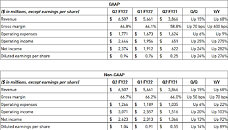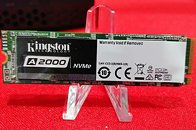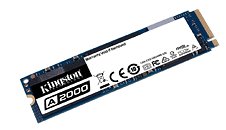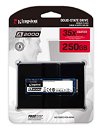Apr 16th, 2025 09:48 EDT
change timezone
Latest GPU Drivers
New Forum Posts
- The TPU UK Clubhouse (26116)
- Help me identify Chip of this DDR4 RAM (21)
- Last game you purchased? (772)
- 5070ti overclock...what are your settings? (5)
- Windows 11 fresh install to do list (23)
- How to relubricate a fan and/or service a troublesome/noisy fan. (229)
- GPU Memory Temprature is always high (16)
- Help For XFX RX 590 GME Chinese - Vbios (4)
- PCGH: "hidden site" to see total money spend on steam (3)
- Share your AIDA 64 cache and memory benchmark here (3053)
Popular Reviews
- G.SKILL Trident Z5 NEO RGB DDR5-6000 32 GB CL26 Review - AMD EXPO
- ASUS GeForce RTX 5080 TUF OC Review
- DAREU A950 Wing Review
- The Last Of Us Part 2 Performance Benchmark Review - 30 GPUs Compared
- Sapphire Radeon RX 9070 XT Pulse Review
- Sapphire Radeon RX 9070 XT Nitro+ Review - Beating NVIDIA
- Upcoming Hardware Launches 2025 (Updated Apr 2025)
- Thermaltake TR100 Review
- Zotac GeForce RTX 5070 Ti Amp Extreme Review
- TerraMaster F8 SSD Plus Review - Compact and quiet
Controversial News Posts
- NVIDIA GeForce RTX 5060 Ti 16 GB SKU Likely Launching at $499, According to Supply Chain Leak (182)
- NVIDIA Sends MSRP Numbers to Partners: GeForce RTX 5060 Ti 8 GB at $379, RTX 5060 Ti 16 GB at $429 (124)
- Nintendo Confirms That Switch 2 Joy-Cons Will Not Utilize Hall Effect Stick Technology (105)
- Over 200,000 Sold Radeon RX 9070 and RX 9070 XT GPUs? AMD Says No Number was Given (100)
- Nintendo Switch 2 Launches June 5 at $449.99 with New Hardware and Games (99)
- Sony Increases the PS5 Pricing in EMEA and ANZ by Around 25 Percent (85)
- NVIDIA PhysX and Flow Made Fully Open-Source (77)
- NVIDIA Pushes GeForce RTX 5060 Ti Launch to Mid-April, RTX 5060 to May (77)
News Posts matching #A2000
Return to Keyword BrowsingCompulab Refreshes Airtop3 SFF Fanless IoT Edge Server Model with GeForce RTX 4060 dGPU Option
Compulab has updated its "ruggedised" Airtop3 compact form factor PC line with a new configuration that includes a pre-installed "Ada Lovelace" GeForce RTX 4060 8 GB discrete graphics card. Back in 2018, TechPowerUp's news section covered the Israeli firm's initiation of a crowdfunding campaign for their fanless Airtop2 Inferno Mini-PC. This second generation design launched with a desktop GeForce GTX 1080 "Pascal" card onboard. Compulab's current-gen SFF fanless IoT Edge server model was first revealed in 2019; debuting with passively cooled Intel Core i9-9900K (Coffee Lake Refresh) processors and Team Green's Quadro RTX 4000 (Turing) graphics cards. Going further back—to February 2018—the brand introduced its vanilla Airtop2 design.
The latest Airtop3 revision still utilizes an old LGA1151 socket platform; compatible with a small selection of Team Blue "Coffee Lake"—original and refreshed—CPUs. The best configuration can be equipped with a workstation grade Xeon E-2278GE processor. The cheapest option is outfitted with an entry level Celeron G4900T unit. As noted by VideoCardz, Compulab's starting price for an Airtop3 + GeForce RTX 4060 dGPU is $2780. A GPU-less setup costs $1790. Customers can pick between the GeForce RTX 4060 or an older "Ampere" RTX A2000 6 GB card. No matter the specification, CPU/APU and GPU aspects are passively cooled via sizeable copper plates.
The latest Airtop3 revision still utilizes an old LGA1151 socket platform; compatible with a small selection of Team Blue "Coffee Lake"—original and refreshed—CPUs. The best configuration can be equipped with a workstation grade Xeon E-2278GE processor. The cheapest option is outfitted with an entry level Celeron G4900T unit. As noted by VideoCardz, Compulab's starting price for an Airtop3 + GeForce RTX 4060 dGPU is $2780. A GPU-less setup costs $1790. Customers can pick between the GeForce RTX 4060 or an older "Ampere" RTX A2000 6 GB card. No matter the specification, CPU/APU and GPU aspects are passively cooled via sizeable copper plates.

NVIDIA Introduces NVIDIA RTX 2000 Ada Generation GPU
Generative AI is driving change across industries—and to take advantage of its benefits, businesses must select the right hardware to power their workflows. The new NVIDIA RTX 2000 Ada Generation GPU delivers the latest AI, graphics and compute technology to compact workstations, offering up to 1.5x the performance of the previous-generation RTX A2000 12 GB in professional workflows. From crafting stunning 3D environments to streamlining complex design reviews to refining industrial designs, the card's capabilities pave the way for an AI-accelerated future, empowering professionals to achieve more without compromising on performance or capabilities. Modern multi-application workflows, such as AI-powered tools, multi-display setups and high-resolution content, put significant demands on GPU memory. With 16 GB of memory in the RTX 2000 Ada, professionals can tap the latest technologies and tools to work faster and better with their data.
Powered by NVIDIA RTX technology, the new GPU delivers impressive realism in graphics with NVIDIA DLSS, delivering ultra-high-quality, photorealistic ray-traced images more than 3x faster than before. In addition, the RTX 2000 Ada enables an immersive experience for enterprise virtual-reality workflows, such as for product design and engineering design reviews. With its blend of performance, versatility and AI capabilities, the RTX 2000 Ada helps professionals across industries achieve efficiencies. Architects and urban planners can use it to accelerate visualization workflows and structural analysis, enhancing design precision. Product designers and engineers using industrial PCs can iterate rapidly on product designs with fast, photorealistic rendering and AI-powered generative design. Content creators can edit high-resolution videos and images seamlessly, and use AI for realistic visual effects and content creation assistance. And in vital embedded applications and edge computing, the RTX 2000 Ada can power real-time data processing for medical devices, optimize manufacturing processes with predictive maintenance and enable AI-driven intelligence in retail environments.
Powered by NVIDIA RTX technology, the new GPU delivers impressive realism in graphics with NVIDIA DLSS, delivering ultra-high-quality, photorealistic ray-traced images more than 3x faster than before. In addition, the RTX 2000 Ada enables an immersive experience for enterprise virtual-reality workflows, such as for product design and engineering design reviews. With its blend of performance, versatility and AI capabilities, the RTX 2000 Ada helps professionals across industries achieve efficiencies. Architects and urban planners can use it to accelerate visualization workflows and structural analysis, enhancing design precision. Product designers and engineers using industrial PCs can iterate rapidly on product designs with fast, photorealistic rendering and AI-powered generative design. Content creators can edit high-resolution videos and images seamlessly, and use AI for realistic visual effects and content creation assistance. And in vital embedded applications and edge computing, the RTX 2000 Ada can power real-time data processing for medical devices, optimize manufacturing processes with predictive maintenance and enable AI-driven intelligence in retail environments.

TechPowerUp GPU-Z v2.55.0 Released
TechPowerUp today released the latest version of TechPowerUp GPU-Z, the popular graphics sub-system information, diagnostic, and monitoring utility. The latest version 2.55.0 adds support for several new recently announced GPUs, and fixes a few bugs. To begin with, GPU-Z adds support for AMD Radeon RX 7800 XT, RX 7700 XT, Ryzen Z1 iGPU, Ryzen Z1 Extreme iGPU, Radeon Pro W7500. From the NVIDIA camp, support is added for the GeForce RTX 4060 Ti 16 GB, RTX 3060 (3,840 CUDA core variant), RTX 4000/5000/6000 Ada Laptop GPUs; RTX A1000 6 GB Laptop, and RTX A2000 Embedded.
Among the usability improvements include Intel Arc A-series GPUs, reporting overclocked frequency when active (rather than stock frequency); die-size and/or transistor-count corrections for NVIDIA GK208, GF119, G98, and AD107; fixed memory bus width on Intel Alder Lake and Raptor Lake systems; a bug that caused graphics card RGB controls to not work on Gigabyte RTX 4090 cards with GPU-Z running; and fixed ROP counts for Navi 33 silicon.
DOWNLOAD: TechPowerUp GPU-Z 2.55.0
Among the usability improvements include Intel Arc A-series GPUs, reporting overclocked frequency when active (rather than stock frequency); die-size and/or transistor-count corrections for NVIDIA GK208, GF119, G98, and AD107; fixed memory bus width on Intel Alder Lake and Raptor Lake systems; a bug that caused graphics card RGB controls to not work on Gigabyte RTX 4090 cards with GPU-Z running; and fixed ROP counts for Navi 33 silicon.
DOWNLOAD: TechPowerUp GPU-Z 2.55.0

Western Digital Delivers New Levels of Flexibility, Scalability for the Data Center
From the cloud, to the edge, to the enterprise, data center architects are deploying higher levels of flash to unlock the potential of AI, object storage, file sharing and more. At the same time, they are laser-focused on controlling spend and must find solutions to help them manage, scale and utilize storage assets more efficiently. This is driving a growing trend to disaggregate and share NVMe flash over fabric (NVMe-oF) for improved performance, availability and flexibility of storage resources.
Helping customers simplify NVMe/NVMe-oF storage deployment, Western Digital (NASDAQ: WDC) today announced its enhanced OpenFlex Data24 3200 NVMe-oF JBOF/Storage Platform along with the next-generation RapidFlex A2000 and C2000 NVMe-oF fabric bridge devices (FBDs), and the new Ultrastar DC SN655 PCIe Gen 4.0 dual-port NVMe SSD. These new storage solutions are enabling an ecosystem, providing more flexibility and choice for simplifying NVMe and NVMe-oF deployment for customers. Western Digital is now the only company with vertical integration capabilities targeting both ends of the Ethernet wire to deliver solutions where data travels from the server initiator to the storage target.
Helping customers simplify NVMe/NVMe-oF storage deployment, Western Digital (NASDAQ: WDC) today announced its enhanced OpenFlex Data24 3200 NVMe-oF JBOF/Storage Platform along with the next-generation RapidFlex A2000 and C2000 NVMe-oF fabric bridge devices (FBDs), and the new Ultrastar DC SN655 PCIe Gen 4.0 dual-port NVMe SSD. These new storage solutions are enabling an ecosystem, providing more flexibility and choice for simplifying NVMe and NVMe-oF deployment for customers. Western Digital is now the only company with vertical integration capabilities targeting both ends of the Ethernet wire to deliver solutions where data travels from the server initiator to the storage target.

ASUS Announces ExpertBook B6 Flip Series
ASUS, a global technology leader renowned for continuously reimagining today's technologies for tomorrow, today announced ExpertBook B6 Flip (B6602F)—the first Expert-series flippable mobile workstation.
This high-performance mobile workstation with its versatile 360° hinge is designed specifically to help architecture, engineering and construction (AEC) companies running industry-leading software solutions like 3ds Max, MicroStation, and Vectorworks. With immense power packed in a slim and flippable form, ExpertBook B6 Flip handles complex workloads seamlessly across AEC disciplines. It helps users bring design concepts to life through BIM software like ArchiCAD, effortlessly transition from 2D sketches to 3D modelling and printing via tools like Creo and Solidworks, and handle data-intensive applications for deeper insights and better decision-making—delivering the edge that AEC companies need in today's competitive market.
This high-performance mobile workstation with its versatile 360° hinge is designed specifically to help architecture, engineering and construction (AEC) companies running industry-leading software solutions like 3ds Max, MicroStation, and Vectorworks. With immense power packed in a slim and flippable form, ExpertBook B6 Flip handles complex workloads seamlessly across AEC disciplines. It helps users bring design concepts to life through BIM software like ArchiCAD, effortlessly transition from 2D sketches to 3D modelling and printing via tools like Creo and Solidworks, and handle data-intensive applications for deeper insights and better decision-making—delivering the edge that AEC companies need in today's competitive market.
Aetina Launches New MXM GPU Modules for AI Performance Boost at the Edge
Aetina has launched new embedded MXM GPU modules powered by the NVIDIA RTX family, including RTX A1000, RTX A2000, and RTX A4500. These NVIDIA Ampere architecture-based MXM GPU modules, providing superb performance and power efficiency, are suitable for various types of computer vision applications across different industries such as commercial gaming, aerospace, healthcare, and manufacturing.
The model names of the new Aetina MXM GPU modules powered by NVIDIA RTX A1000, NVIDIA RTX A2000, and NVIDIA RTX A4500 are M3A1000-PP, M3A2000-VY, and M3A4500-WP, respectively. These models support CUDA Compute version 8.6, OpenGL 4.6, Vulkan 1.2, DirectX 12 Ultimate, and Shader Model 7.0, as well as Windows 10/11 64-bit and Linux 64-bit operating systems. For display and output, M3A1000-PP, M3A2000-VY, and M3A4500-WP all support up to 4x DisplayPort (DP) and 8K (7680 × 4320) resolution.
The model names of the new Aetina MXM GPU modules powered by NVIDIA RTX A1000, NVIDIA RTX A2000, and NVIDIA RTX A4500 are M3A1000-PP, M3A2000-VY, and M3A4500-WP, respectively. These models support CUDA Compute version 8.6, OpenGL 4.6, Vulkan 1.2, DirectX 12 Ultimate, and Shader Model 7.0, as well as Windows 10/11 64-bit and Linux 64-bit operating systems. For display and output, M3A1000-PP, M3A2000-VY, and M3A4500-WP all support up to 4x DisplayPort (DP) and 8K (7680 × 4320) resolution.

NVIDIA Announces Financial Results for Second Quarter Fiscal 2022
NVIDIA (NASDAQ: NVDA) today reported record revenue for the second quarter ended August 1, 2021, of $6.51 billion, up 68 percent from a year earlier and up 15 percent from the previous quarter, with record revenue from the company's Gaming, Data Center and Professional Visualization platforms. GAAP earnings per diluted share for the quarter were $0.94, up 276 percent from a year ago and up 24 percent from the previous quarter. Non-GAAP earnings per diluted share were $1.04, up 89 percent from a year ago and up 14 percent from the previous quarter.
"NVIDIA's pioneering work in accelerated computing continues to advance graphics, scientific computing and AI," said Jensen Huang, founder and CEO of NVIDIA. "Enabled by the NVIDIA platform, developers are creating the most impactful technologies of our time - from natural language understanding and recommender systems, to autonomous vehicles and logistic centers, to digital biology and climate science, to metaverse worlds that obey the laws of physics.
"NVIDIA's pioneering work in accelerated computing continues to advance graphics, scientific computing and AI," said Jensen Huang, founder and CEO of NVIDIA. "Enabled by the NVIDIA platform, developers are creating the most impactful technologies of our time - from natural language understanding and recommender systems, to autonomous vehicles and logistic centers, to digital biology and climate science, to metaverse worlds that obey the laws of physics.

Kingston Announces Shipment of A2000 Series PCIe 3.0 4x NVMe PCIe SSD - $100 for 1 TB
Back at CES 2019 we shared a story on Kingston's then upcoming A2000 series NVMe drives. The company's development strategy for these was to undercut SATA SSDs in pricing while delivering non SATA-bound speeds. The company planned to leverage component cost falls for NVMe controllers, pairing that with the reduced materials cost of NVMe drives (smaller than their SATA counterparts) so as to be able to achieve below-SATA price points. The choice of Toshiba's BiCS4 3D TLC NAND also aimed to keep costs down, whilst delivering performance that's "at least three times as high as SATA-bound drives".
The company is offering a limited 5-year warranty on their A2000 series, which in itself is a sign of the company's confidence in these products - despite their entry-level classification and overall development strategy. The A2000 series will be available in 250 GB, 500 GB and 1 TB capacities, with speeds claimed of up to 2,200/2,000MB/s sequential read/writes; up to 250,000/220,000 IOPS in random 4K read/writes; and 600 TBW rating (all of these values are for the 1 TB solution, with TBW falling to 350 TBW for the 500 GB part and 150 TBW for the 250 GB drive. These drives make use of a PCIe 3.0 4x controller, which means savings weren't at the expense of 2x PCIe channels, as some solutions have done in the past in order to cut costs. Pricing is being quoted at $40 for the 250 GB part, $60 for the 500 GB one, and a mere $100 for the 1 TB part. The true democratization of NVMe SSDs has just caught some heavy favorable winds on its sails.
The company is offering a limited 5-year warranty on their A2000 series, which in itself is a sign of the company's confidence in these products - despite their entry-level classification and overall development strategy. The A2000 series will be available in 250 GB, 500 GB and 1 TB capacities, with speeds claimed of up to 2,200/2,000MB/s sequential read/writes; up to 250,000/220,000 IOPS in random 4K read/writes; and 600 TBW rating (all of these values are for the 1 TB solution, with TBW falling to 350 TBW for the 500 GB part and 150 TBW for the 250 GB drive. These drives make use of a PCIe 3.0 4x controller, which means savings weren't at the expense of 2x PCIe channels, as some solutions have done in the past in order to cut costs. Pricing is being quoted at $40 for the 250 GB part, $60 for the 500 GB one, and a mere $100 for the 1 TB part. The true democratization of NVMe SSDs has just caught some heavy favorable winds on its sails.

Kingston's A2000 NVMe SSDs - Aiming at Sub-SATA SSD Pricing On Toshiba's BiCS4 3D TLC NAND
Kingston at CES 2019 demonstrated its A2000 NVMe SSDs, which the company has developed with a specific goal in mind - undercut SATA-based SSDs. This has, until now, been impossible, due to increased costs of NVMe controllers over their SATA counterparts, but such is the trend with any technology - prices do come down after a product is first introduced. Some NVMe solutions have used cut-down controllers that only supported PCIe x2 buses, but not the A2000 - they will use full-fledged PCIe 4x lanes, and will be available in 240, 480, or 960 GB capacities.
The A2000 series will make use of different controllers, which means Kingston is sourcing from more than one manufacturer (Silicon Motion's SM2263-series and Phison's low-cost controllers). While that could introduce performance variations, Kingston says that they will be making sure the experience and performance stays consistent between differently-sourced products, and that the only reason for this is to decrease overall BOM costs to achieve a lineup-wide below-SATA cost. NVMe drives typically require less materials than SATA drives, and as a plus, aren't constrained by link bandwidth limitations. This is huge news for the industry, because if Kingston manages to do its bidding 2Q2019, as they expect, the industry will follow suit - they won't be leaving the lowest-priced, and consequently, likely highest-volume product, to a single player. Kingston is quoting up to 2000 MB/s sequential read speeds as well as up to 1500 MB/s sequential write speeds.
The A2000 series will make use of different controllers, which means Kingston is sourcing from more than one manufacturer (Silicon Motion's SM2263-series and Phison's low-cost controllers). While that could introduce performance variations, Kingston says that they will be making sure the experience and performance stays consistent between differently-sourced products, and that the only reason for this is to decrease overall BOM costs to achieve a lineup-wide below-SATA cost. NVMe drives typically require less materials than SATA drives, and as a plus, aren't constrained by link bandwidth limitations. This is huge news for the industry, because if Kingston manages to do its bidding 2Q2019, as they expect, the industry will follow suit - they won't be leaving the lowest-priced, and consequently, likely highest-volume product, to a single player. Kingston is quoting up to 2000 MB/s sequential read speeds as well as up to 1500 MB/s sequential write speeds.
Apr 16th, 2025 09:48 EDT
change timezone
Latest GPU Drivers
New Forum Posts
- The TPU UK Clubhouse (26116)
- Help me identify Chip of this DDR4 RAM (21)
- Last game you purchased? (772)
- 5070ti overclock...what are your settings? (5)
- Windows 11 fresh install to do list (23)
- How to relubricate a fan and/or service a troublesome/noisy fan. (229)
- GPU Memory Temprature is always high (16)
- Help For XFX RX 590 GME Chinese - Vbios (4)
- PCGH: "hidden site" to see total money spend on steam (3)
- Share your AIDA 64 cache and memory benchmark here (3053)
Popular Reviews
- G.SKILL Trident Z5 NEO RGB DDR5-6000 32 GB CL26 Review - AMD EXPO
- ASUS GeForce RTX 5080 TUF OC Review
- DAREU A950 Wing Review
- The Last Of Us Part 2 Performance Benchmark Review - 30 GPUs Compared
- Sapphire Radeon RX 9070 XT Pulse Review
- Sapphire Radeon RX 9070 XT Nitro+ Review - Beating NVIDIA
- Upcoming Hardware Launches 2025 (Updated Apr 2025)
- Thermaltake TR100 Review
- Zotac GeForce RTX 5070 Ti Amp Extreme Review
- TerraMaster F8 SSD Plus Review - Compact and quiet
Controversial News Posts
- NVIDIA GeForce RTX 5060 Ti 16 GB SKU Likely Launching at $499, According to Supply Chain Leak (182)
- NVIDIA Sends MSRP Numbers to Partners: GeForce RTX 5060 Ti 8 GB at $379, RTX 5060 Ti 16 GB at $429 (124)
- Nintendo Confirms That Switch 2 Joy-Cons Will Not Utilize Hall Effect Stick Technology (105)
- Over 200,000 Sold Radeon RX 9070 and RX 9070 XT GPUs? AMD Says No Number was Given (100)
- Nintendo Switch 2 Launches June 5 at $449.99 with New Hardware and Games (99)
- Sony Increases the PS5 Pricing in EMEA and ANZ by Around 25 Percent (85)
- NVIDIA PhysX and Flow Made Fully Open-Source (77)
- NVIDIA Pushes GeForce RTX 5060 Ti Launch to Mid-April, RTX 5060 to May (77)




















